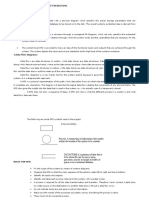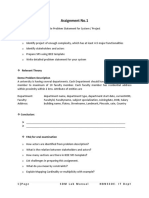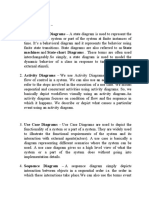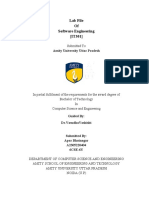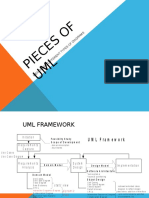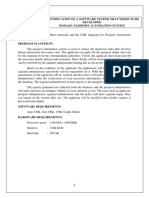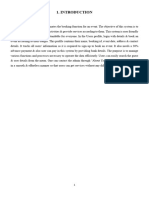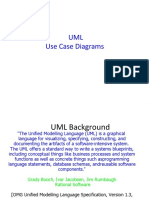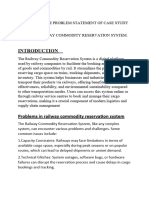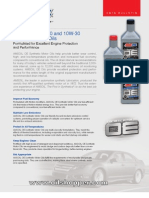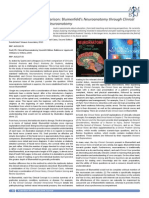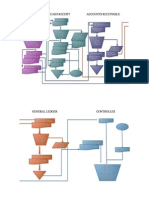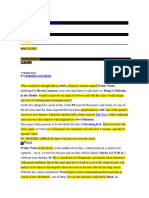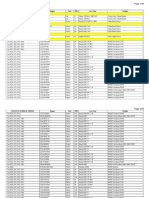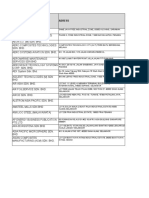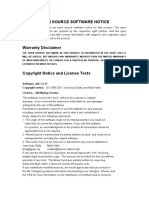0% found this document useful (0 votes)
43 views9 pagesSe Lab File
The document describes designing an entity relationship diagram for a railway commodity reservation system. It discusses the key components of an ER diagram including entities, relationships, attributes, and their definitions. It also covers entity and attribute categories. The document notes limitations of ER diagrams including only being applicable for relational data and difficulties integrating with existing databases. It states that ER diagrams are commonly used for database design, validation, and documentation.
Uploaded by
Parth SarthiCopyright
© © All Rights Reserved
We take content rights seriously. If you suspect this is your content, claim it here.
Available Formats
Download as PDF, TXT or read online on Scribd
0% found this document useful (0 votes)
43 views9 pagesSe Lab File
The document describes designing an entity relationship diagram for a railway commodity reservation system. It discusses the key components of an ER diagram including entities, relationships, attributes, and their definitions. It also covers entity and attribute categories. The document notes limitations of ER diagrams including only being applicable for relational data and difficulties integrating with existing databases. It states that ER diagrams are commonly used for database design, validation, and documentation.
Uploaded by
Parth SarthiCopyright
© © All Rights Reserved
We take content rights seriously. If you suspect this is your content, claim it here.
Available Formats
Download as PDF, TXT or read online on Scribd
/ 9



